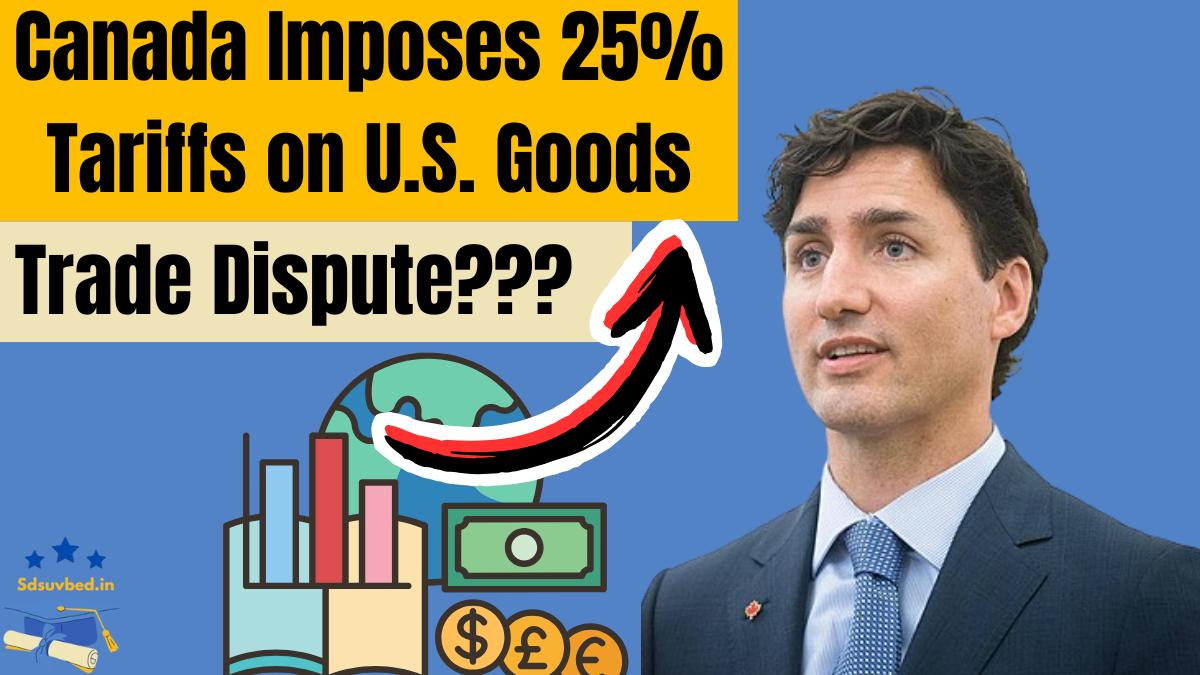In a significant escalation of trade tensions, Canada has announced the imposition of 25% tariffs on a wide array of U.S. goods. This move comes as a direct response to the United States’ recent decision to levy similar tariffs on Canadian imports. The unfolding trade dispute between these long-standing allies has far-reaching implications for both economies.

What Prompted Canada to Impose 25% Tariffs on U.S. Goods?
The catalyst for Canada’s retaliatory tariffs was the U.S. administration’s imposition of a 25% levy on Canadian and Mexican imports, along with an additional 10% tariff on Chinese goods. The U.S. justified these measures by citing concerns over illegal immigration and drug trafficking. In response, Canadian Prime Minister Justin Trudeau announced that Canada would implement 25% tariffs on approximately 155 billion Canadian dollars’ worth of American products, including items such as beer, wine, household appliances, and sporting goods.
Which U.S. Products Are Affected by Canada’s Retaliatory Tariffs?
Canada’s tariffs target a diverse range of American goods. The initial set of tariffs, effective from Tuesday, covers 30 billion Canadian dollars’ worth of U.S. products, with plans to extend tariffs to an additional 125 billion Canadian dollars’ worth in the following weeks. The targeted items include:
- Alcoholic Beverages: Beer, wine, and bourbon.
- Agricultural Products: Fruits, fruit juices, and vegetables.
- Consumer Goods: Perfumes, clothing, shoes, household appliances, sporting goods, and furniture.
Additionally, tariffs will be applied to lumber and plastics. Canada is also considering non-tariff measures related to critical minerals and procurement.
What Are the Potential Economic Impacts of These Tariffs?
Economists warn that the imposition of these tariffs by both nations could lead to increased prices for a wide range of products for consumers. In the U.S., consumers might experience higher costs for imported goods such as avocados, beer, and electronics. Similarly, Canadian consumers could face price hikes on American products. The tariffs may also disrupt supply chains, affecting industries like automotive manufacturing, which relies heavily on cross-border trade. The overall economic impact is anticipated to be substantial, with potential job losses and increased inflation in both countries.
How Have Canadian Leaders and the Public Reacted to the Tariffs?
Prime Minister Trudeau emphasized that while Canada did not seek this conflict, it is prepared to stand up for its interests. He acknowledged the potential consequences for people on both sides of the border and urged Canadians to support domestic products. Provincial leaders have also taken steps in response; for instance, Ontario Premier Doug Ford announced a ban on American liquor in provincial stores. Public reactions have included displays of nationalism, such as fans booing the U.S. national anthem at sporting events.
MUST READ: Canada’s $445 Family Benefit Boost 2025: Check Your Payment Schedule
What Are the Next Steps in the U.S.-Canada Trade Dispute?
The situation remains dynamic, with both nations potentially escalating their trade measures. The U.S. administration has indicated readiness to increase tariffs further if retaliatory actions are taken. Canada, while expressing a desire to resolve the dispute, has made it clear that it will not back down. Both countries may seek negotiations to de-escalate tensions, but as of now, no formal talks have been announced.
Frequently Asked Questions (FAQs)
What is the reason behind the U.S. imposing tariffs on Canadian goods?
The U.S. has cited concerns over illegal immigration and drug trafficking as the primary reasons for imposing tariffs on Canadian goods.
How will these tariffs affect consumers in both countries?
Consumers in both countries are likely to experience higher prices on a variety of goods, including food, beverages, and electronics, as the increased costs of tariffs are passed down the supply chain.
Are there any products exempt from Canada’s retaliatory tariffs?
While the initial list is extensive, certain essential goods may be exempt to minimize negative impacts on Canadian consumers. However, specific exemptions have not been detailed.
Could this trade dispute lead to a broader trade war?
Yes, the escalating tariffs and retaliatory measures have the potential to develop into a broader trade war, affecting global trade dynamics and economic stability.
What steps can businesses take to mitigate the impact of these tariffs?
Businesses can explore diversifying their supply chains, seeking alternative markets, and engaging in advocacy through industry groups to mitigate the impact of tariffs.
Is there a possibility of resolving this dispute through negotiations?
While tensions are high, there remains a possibility for resolution through diplomatic negotiations, though no formal talks have been announced yet.
How might these tariffs impact the automotive industry?
The automotive industry, which relies on integrated supply chains across the U.S. and Canada, could face significant disruptions, leading to increased production costs and potential job losses.
What role does the World Trade Organization (WTO) play in this dispute?
The WTO can serve as a platform for dispute resolution, and affected countries may file complaints alleging violations of international trade agreements.
Click here to know more.
A passionate content writer specializing in creating engaging, SEO-optimized content. With expertise in blogs, web copy, and storytelling, I craft words that connect with audiences and deliver results.
